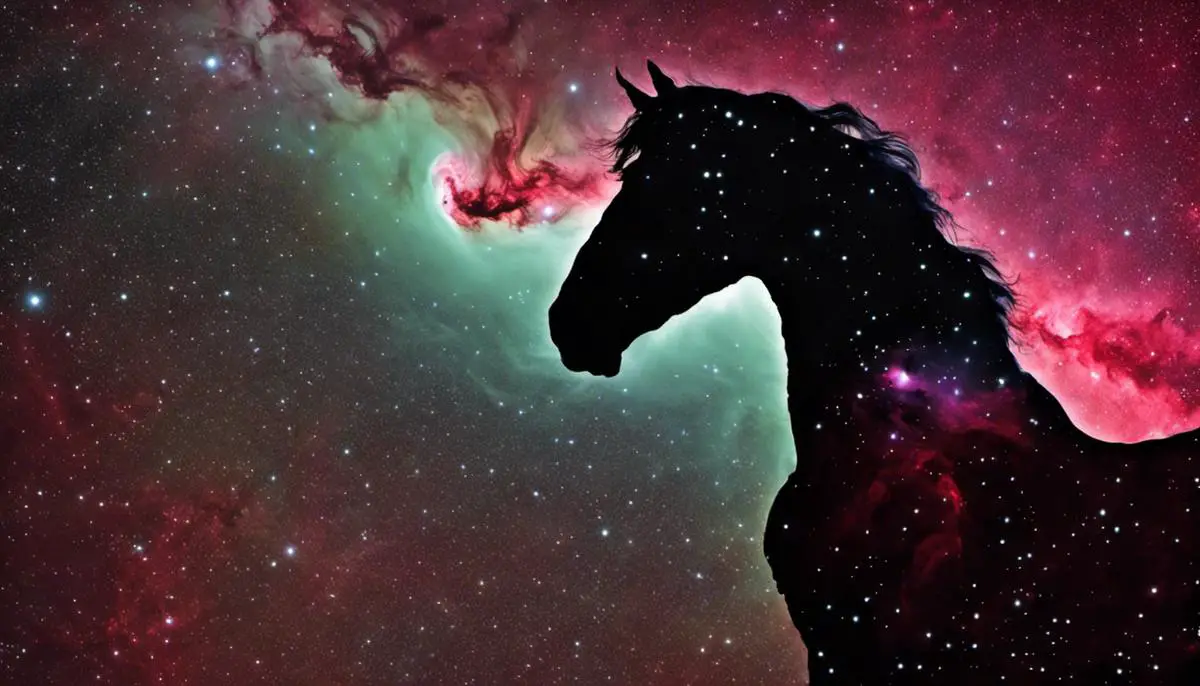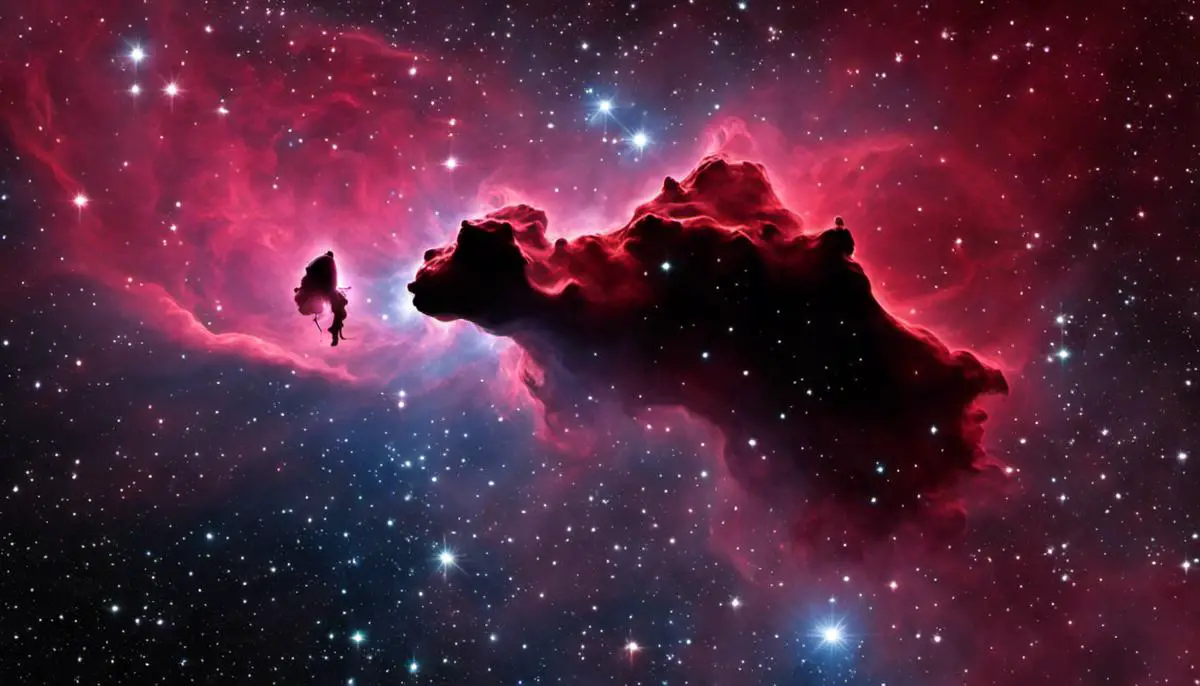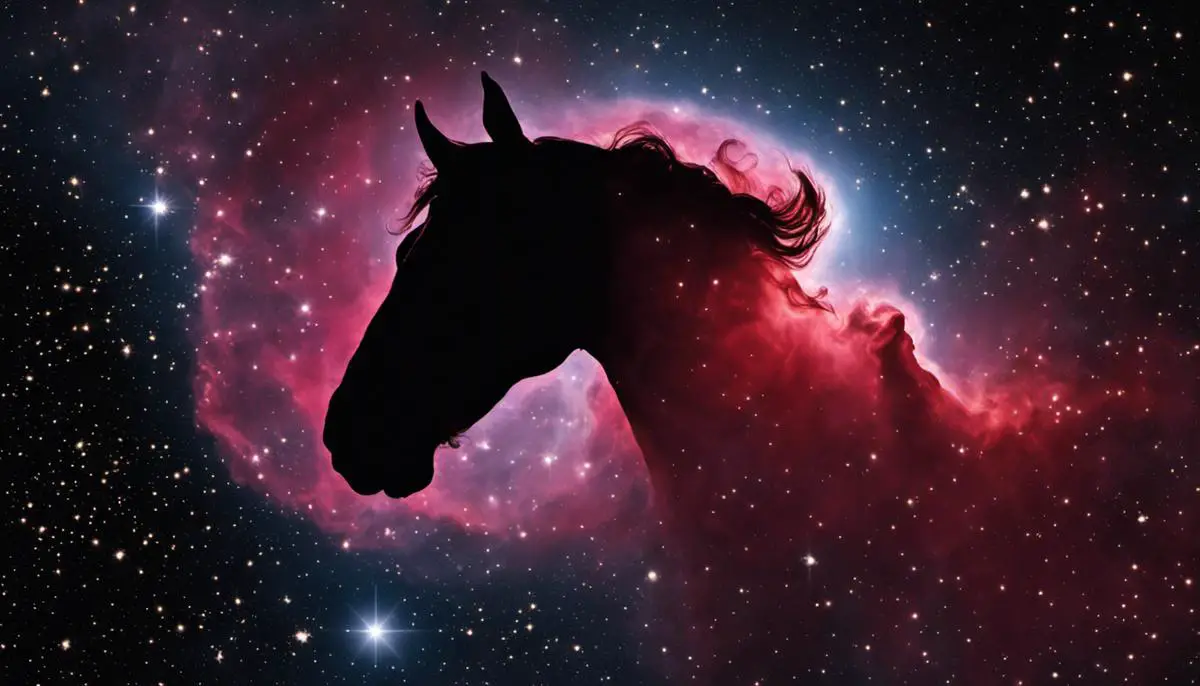The expansive and mysterious universe offers an endless supply of fascination and wonder, with countless celestial objects captivating our curiosity and prompting investigation. Among these is the enigmatic Horsehead Nebula, an intriguing dark nebula found within the constellation Orion. Recognizable for its unique equine silhouette, this nebula stands as an enticing subject for astronomical analysis. In this discussion, we will navigate through a concise understanding of the Horsehead Nebula, the methods utilized to estimate cosmic distances, and ultimately, the estimation of the galactic chasm that separates us from this fascinating skyward figure.
Understanding the Horsehead Nebula
Understanding the Horsehead Nebula
The Horsehead Nebula, scientifically known as Barnard 33, is one of the most fascinating structures in our universe. Nestled in the Orion region, this nebula bears a striking resemblance to the silhouette of a horse’s head when viewed from Earth, thus earning its unique moniker. This captivating dark nebula is a dense cloud of dust and non-luminous gas, obscuring the light from the ionized gas behind it and creating the illusion of a horsehead shape in the process.
Location and Distance
The Horsehead Nebula is located in the constellation Orion, specifically just to the south of the star Alnitak, which is part of Orion’s belt. This nebula is estimated to be approximately 1,500 light-years away from Earth. To put that in a clearer perspective, considering a light-year is roughly equivalent to about six trillion miles, the Horsehead Nebula lies nearly nine quadrillion miles (or 9,000,000,000,000,000 miles) away from us. It’s enormous distance and intriguing structure make it an important astral body for astronomical study, often analyzed to understand the universe’s life cycles and cosmic dust properties.
The Horsehead Nebula’s Role in Astronomy
A Scottish astronomer named Williamina Fleming discovered the captivating Horsehead Nebula in 1888. Over the last century, the nebula’s unique structure and intriguing secrets have consistently attracted the attention of astronomers and cosmic enthusiasts. Its distant location from Earth has provided astronomers with valuable insights into interstellar phenomena, like the process of stars forming from gas and dust. As such, the Horsehead Nebula is not just a breathtaking celestial body for astronomical study but also a key part of our understanding of the cosmos. It also serves as a vivid reminder of the vast expanse of the universe and the numerous explorations that continue to unravel its mysteries.

Estimating cosmic distance
Understanding Cosmic Distances
Determining the distance of celestial objects like the Horsehead Nebula from Earth can be quite challenging, and may require the usage of several methods. One of the most common methods is called parallax which involves observing the perceived shift of a celestial object relative to a distant background from two different points. This technique allows astronomers to establish a triangle with the two observation points and the celestial object, thereby enabling them to compute its distance from Earth.
Additionally, astronomers often make use of the phenomenon known as redshift for determining cosmic distances. When an object in space moves away from Earth, the emitted light appears to ‘shift’ towards the ‘redder’, or longer, wavelengths of the electromagnetic spectrum. This concept, known as the Doppler effect, allows scientists to measure how fast a far-off galaxy, or nebula, is moving away from us and consequently estimate its distance.
Standard Candles and the Horsehead Nebula
The concept of ‘standard candles’ also plays a crucial role in this field. Standard candles are cosmic objects, such as certain types of stars or supernovae, whose intrinsic brightness is well understood. By comparing this known luminosity with the object’s apparent brightness as observed from Earth, it is possible to figure out how far away the object is. However, standard candles are generally used for larger distances, and given that the Horsehead Nebula is located relatively close in our own Milky Way galaxy, within the Orion molecular cloud complex, it’s mostly the parallax method that has been used to determine its distance from Earth – about 1,500 light-years.
Scientific discovery is a multifaceted process, employing a blend of methods and principles to unravel the mysteries of the cosmos. Determining the distances to cosmic bodies is one such element of exploration, crucial not just for understanding the enormous scale of the universe but also for illuminating its past and forecasting its future.

Horsehead Nebula’s distance from Earth
Calculating the Distance of the Horsehead Nebula from Earth
Among the cosmos’ stunning and iconic formations is the Horsehead Nebula – a target of both fascination and study for astronomers. The distance between this majestic celestial feature and our home planet is gauged using several sophisticated observational techniques and complex calculations. While there are variations in these distance estimates, the consensus puts the Horsehead Nebula about 1,500 light-years away from Earth. Intriguingly, observing this nebula means seeing it as it was 1,500 years ago, illustrating the time it takes for its light to traverse the vast expanse of space and reach us.
Understanding Celestial Distances
Estimating the distance of nebulae, such as the Horsehead, from Earth can be an intricate process involving complex methodologies. The concept of “parallax” is one common method used by astronomers to accurately estimate these celestial distances. Essentially, parallax involves tracking an object’s position when observed from two different points and calculating the angle of inclination between these positions. However, given the vast distances involved, the displacement angles for objects like the Horsehead Nebula are incredibly minute. Because of this, the calculations require highly precise instruments and careful analysis. The distance of the Horsehead Nebula ranging about 1,500 light years was derived using such parallax measurements and other complex astrometric observations. These estimates help researchers better understand the position and features of the nebula, including its detailed structure and relationship to other celestial bodies.

As our cosmic understanding broadens with the passage of time, the grandeur of the universe unveils itself bit by bit. Just as the sea has its unexplored depths, the star-studded skies that guide the nocturnal navigator possess mysteries beyond our comprehension. The Horsehead Nebula, nestled in the expansive constellation of Orion, becomes a testament of the universe’s dramatic canvas with its signature features and its relative distance giving us perspective about our place in this grand design. Unraveling these distances reminds us of the magnificent scale of the cosmos. Despite our sophisticated technological advancements and scientific prowess, the Horsehead Nebula, along with other celestial entities, continue to inspire awe, reminding us that there is always more to learn, explore, and appreciate about our vast universe.
![]()
